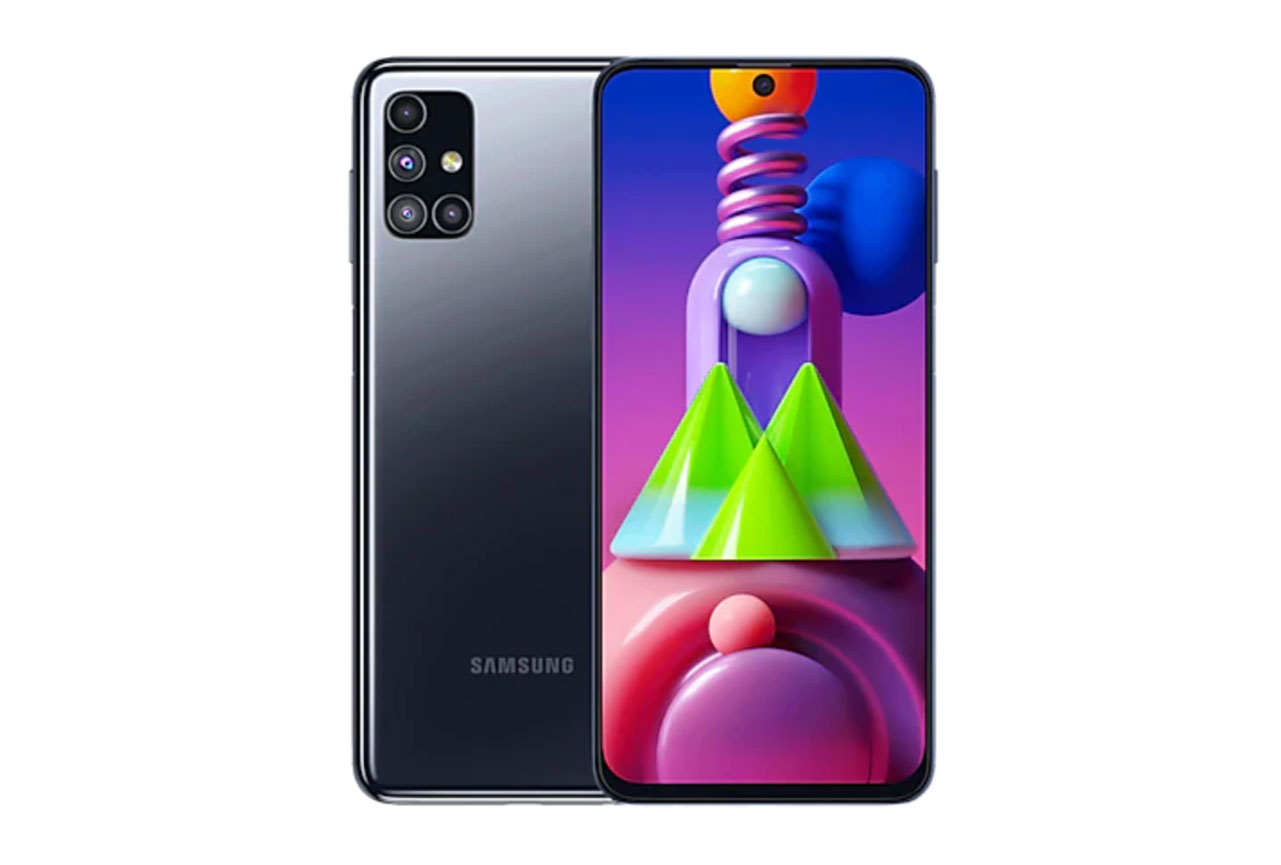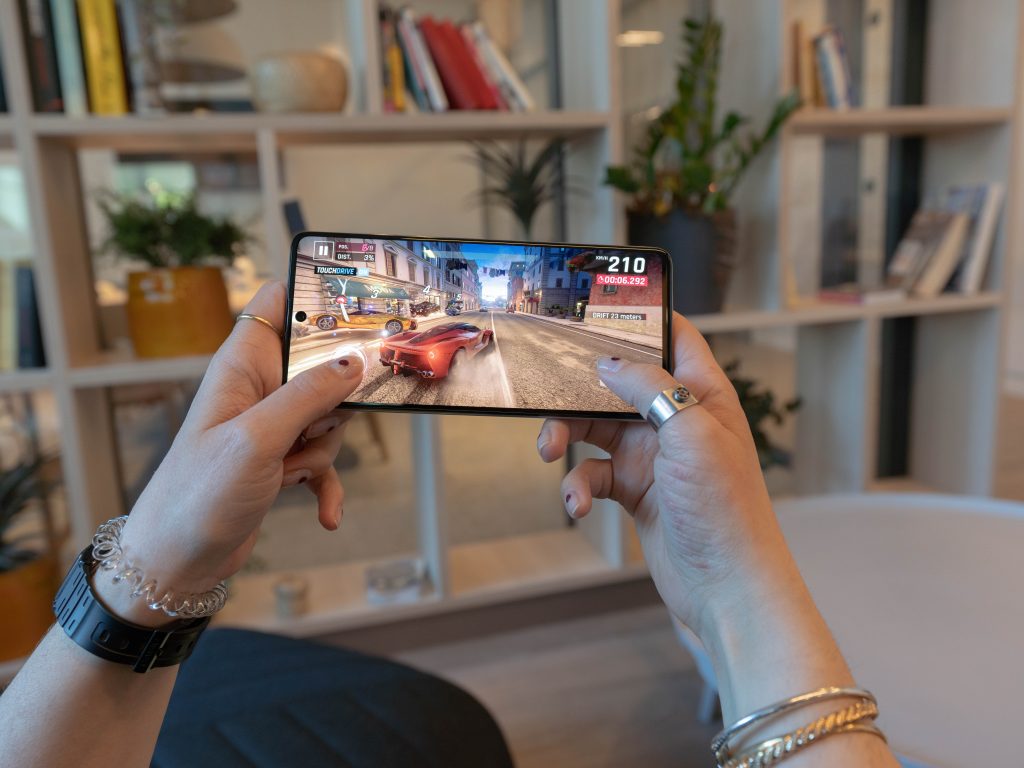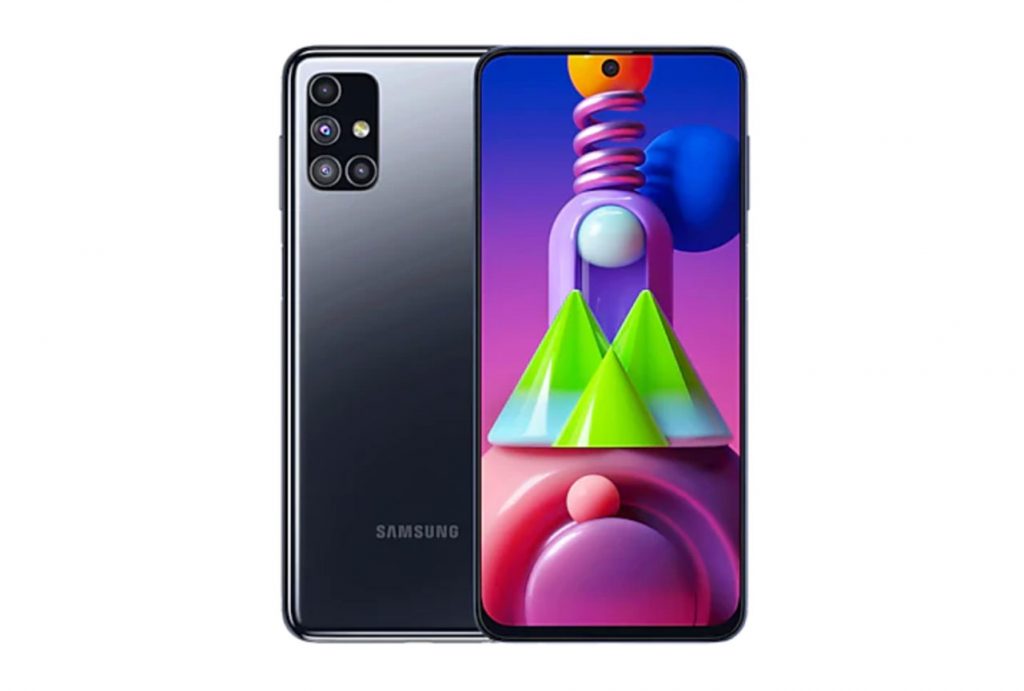Samsung announced the Galaxy M51 in August 2020 at a launch price of $399, which is right at the limit between our Advanced and High-End segments (the latter is $400-$599). Equipped with a 6.7-inch FHD+ Super AMOLED Plus display, a quad camera setup with a 64 MP main camera, and 128 GB of storage, it comes with the largest of all batteries in our database to date — a whopping 7000 mAh. We put the Samsung Galaxy M51 through its paces in our Battery testing protocol and are pleased to share the results below.
Key specifications:
- Battery capacity: 7000 mAh
- 25W charger included
- Chipset: Qualcomm Snapdragon 730G (8 nm)
- 6.7-inch, 1080 x 2400 FHD+ resolution, 60 Hz Super AMOLED Plus display
- Tested ROM / RAM combination: 128 GB / 6 GB
About DXOMARK Battery tests: For scoring and analysis in our smartphone battery reviews, DXOMARK engineers perform a variety of objective tests over a week-long period both indoors and outdoors. This article highlights the most important results of our testing. (See our introductory and how we test articles for more details about our smartphone Battery protocol.)
Test summary
Scoring
Sub-scores and attributes included in the calculations of the global score.

Samsung Galaxy M51


Key performances
These key points are derived from the lab measurements during testing and do not figure into the overall score. The lab measurements, however, are used for the overall score.
 37th
37th
 10th
10th
Pros
- Best in our overall ranking across all devices tested to date (May 2021)
- More than 3 days of average use and almost 2 full days of intensive use
- Low power consumption in most on the go and calibrated use cases
Cons
- Charging is only average at best.
- Device feels somewhat big and heavy because of the large battery.
With an overall Battery score of 88, the Samsung Galaxy M51 not only comes in first in its price segment at the time of this publication, but first across all segments to date. While weighed down a bit by its large 7000 mAh battery, that same battery provides more than 72 hours of autonomy with average use. It performed particularly well in our calibrated use case tests, scoring an astonishing 100 points, leading all other smartphones in every use case score except for 3G calling. Further, the Samsung device also racked up an excellent score for efficiency. The only area in which the Galaxy M51 failed to garner top marks was for charging, with only low-average performance in both our empty-to-full charging and our five-minute quick boost tests.
We compared the Samsung Galaxy M51’s performance in several key categories with two other Advanced devices, the Motorola Moto G9 Power and the Huawei P40 Lite; battery capacity, charger, display type and resolution, and processor specifications for all three devices are shown in the table below.
|
Samsung Galaxy M51 |
Motorola Moto G9 Power |
Huawei P40 Lite |
|
| Battery (mAh) |
7000 |
6000 |
4200 |
| Charger (W) |
25W |
20W |
40W |
| Display type |
AMOLED |
IPS LCD |
IPS LCD |
| Resolution |
1080 x 2400 |
720 x 1640 |
1080 x 2310 |
| Processor |
Qualcomm Snapdragon 730G (8 nm) |
Qualcomm Snapdragon 662 (11 nm) |
Kirin 810 (7 nm) |
Autonomy (96)
How long a battery charge lasts depends not only on battery capacity, but also other aspects of the phone’s hardware and software. The DXOMARK Battery autonomy score is composed of three performance sub-scores: (1) Stationary, (2) On the go, and (3) Calibrated use cases. Each sub-score comprises the results of a comprehensive range of tests for measuring autonomy in all kinds of real-life scenarios.
It is unusual for our engineers to enthuse in their written analyses of the devices they test, but this time they could not help themselves, rightly calling the Samsung Galaxy M51 an “autonomy monster!” (exclamation point theirs). And indeed, the Samsung’s sterling performance puts it in the lead in all our of autonomy test categories thus far. That said, the M51’s battery linearity is a little under par, as when its indicator says it has 20% power left, it really has only 16.5% — but this is a minor quibble.
Let’s take a closer look at its autonomy achievements.

Stationary
Samsung Galaxy M51
92
104
A robot housed in a Faraday cage performs a set of touch-based user actions during what we call our “typical usage scenario” (TUS) — making calls, video streaming, etc. — 4 hours of active use over the course of a 16-hour period, plus 8 hours of “sleep.” The robot repeats this set of actions every day until the device runs out of power.
The Samsung Galaxy M51’s huge 7000 mAh battery gave it an undeniable advantage over both the Motorola Moto G9 Power and the Huawei P40 Lite in our autonomy tests, with the Galaxy M51 running for four full nights and three full days, for a total of 80 hours and 40 minutes (vs. 67 hours for the Moto G9 Power with its 6000 mAh battery and nearly 56 hours for the Huawei and its much smaller 4200 mAh battery). Perhaps equally if not more impressive, the Samsung device can provide almost two full days of intensive use.
The graph below shows how the Samsung Galaxy M51 and its rivals performed in our robot-driven typical usage scenario:
Using a smartphone on the go takes a toll on autonomy because of extra “hidden” demands, such as the continuous signaling associated with cellphone network selection, for example. DXOMARK Battery experts take the phone outside and perform a precisely defined set of activities while following the same three-hour travel itinerary for each device.
It was a similar story in our on the go tests, with the Samsung device holding a commanding lead over the Motorola, which in turn performed much better than the Huawei. The Galaxy M51 took top marks in every category except for camera, where it was edged out by the Moto G9 Power.
For this series of tests, the smartphone returns to the Faraday cage and our robots repeatedly perform actions linked to specific sets of activities (use cases) such as gaming, streaming, etc.
The difference in scores between the Samsung Galaxy M51 and both the Motorola and Huawei devices is mainly due to the M51’s vastly larger battery capacity, with neither competitor coming anywhere near the Samsung Galaxy M51’s 100-point score (the Moto G9 Power is some 27 points behind at 73, and the P40 Lite brings up the rear of the segment at 59 points — 41 points behind the M51).

Charging (61)
The DXOMARK Battery charging score is composed of two sub-scores, charging speed and quick power boost. Full charge tests assess the reliability of the battery power gauge; measure how long it takes to charge a battery from 0% to 80% capacity and from 80% to 100%; and measure how long and how much power the battery takes to go from an indicated 100% to an actual full charge. With the phone at different charge levels (20%, 40%, 60%, 80%), Quick boost tests measure the amount of charge the battery receives after being plugged in for 5 minutes.
While objectively average, the Samsung Galaxy M51’s charging performance was nowhere near as good as its performance for autonomy and efficiency, soundly outperformed (by nearly 1.5 hours) by the Huawei P40 Lite both because of the P40’s far smaller battery capacity (4200 mAh) and its more powerful 40W charger. Our engineers found that while the M51’s charger started out at 25W as labeled, it spent most of its zero to 80% charging time at around 20W. Still, that was enough to beat the Motorola Moto G9 Power’s time by almost a half-hour.

Full charge
Samsung Galaxy M51
59
121
Charging from empty to 80% capacity took the Samsung Galaxy M51 one hour and 23 minutes, then another 31 minutes to go from 80% capacity to when the battery indicator shows 100%; and finally, another 30 minutes to achieve a full charge, for a total close to 2.5 hours in all. (This puts the accuracy of its battery indicator at 95%, by the way, which is behind the Moto’s at 99% and the P40 Lite’s at 97%.) While the Samsung’s charging time puts it in second place among the three devices in this review, the graph below shows how just far a cry it is from the first-place Huawei:

Quick boost
Samsung Galaxy M51
64
111
After plugging in for 5 minutes at each tested battery level (20%, 40%, 60%, and 80%), the Samsung Galaxy M51 gained between 2 hours and 2 hours 20 minutes of autonomy. Its Quick boost score was better than the Motorola Moto G9 Power’s by a few points, but once again, the Huawei took the top spot by a significant margin.
| Samsung Galaxy M51 | Motorola Moto G9 Power | Huawei P40 Lite | ||
| Autonomy boost (hh:mm) | 20% | 2:12 | 1:51 | 5:13 |
| 40% | 2:26 | 2:00 | 5:04 | |
| 60% | 2:06 | 2:03 | 4:02 | |
| 80% | 2:05 | 2:06 | 2:15 | |
| Percentage boost | 20% | 4.1 % | 4 % | 15.2 % |
| 40% | 4.5 % | 4.3 % | 14.8 % | |
| 60% | 3.9 % | 4.4 % | 11.7 % | |
| 80% | 3.9 % | 4.6 % | 6.6 % | |
| Energy consumed | 20% | 1405 mWh | 1452 mWh | 3142 mWh |
| 40% | 1553 mWh | 1561 mWh | 3055 mWh | |
| 60% | 1342 mWh | 1601 mWh | 2425 mWh | |
| 80% | 1331 mWh | 1641 mWh | 1355 mWh |
Efficiency (87)
The DXOMARK power efficiency score consists of two sub-scores, Charge up and Discharge, both of which combine data obtained during robot-based typical usage scenario testing, outdoor mobility testing, charging evaluation, and power measurements, and then take into consideration the device’s battery capacity.

Charge up
Samsung Galaxy M51
76
105
The Samsung Galaxy M51 displays an efficient charging process, with 78.7% of the electrical power drawn from the wall outlet stored in the battery, which puts in on par with the Huawei P40 Lite, and represents 14% more than the Motorola Moto G9 Power. The Galaxy M51’s charger has negligible power consumption when the phone is not plugged in; the Huawei and Motorola devices consume a bit more but still display average consumption in this regard. However, when the phones are plugged into their chargers, all three consume about a little less than average power.
With 79% nominal efficiency, the Samsung Galaxy M51 ties with the Huawei P40 Lite, and both beat the Motorola Moto G9 Power, which came in a distant second in this comparison at 64%.

Discharge
Samsung Galaxy M51
89
121
The Samsung Galaxy M51 manages power consumption well for all calibrated use case tests; while it ties the Huawei P40 Lite for the most part, it is actually better than the Huawei device for video streaming, and it is better than the Motorola Moto G9 Power, which struggles in use cases with the display on (such as gaming and video), despite its lower screen resolution. This all said, it was a tight race between the Samsung and the Huawei for the top scores in both discharge and the overall Efficiency, but ultimately the Samsung came out ahead. (The Huawei came close for discharge because its nighttime consumption is better than the Samsung’s, but not better enough to win.)
Conclusion
The Samsung Galaxy M51 comes with a “monster” 7000 mAh battery that outperforms the competition for both autonomy and efficiency. Where it falls down a little is in charging, where it takes nearly 2.5 hours to go from empty to a full charge — almost an hour longer than the Huawei P40 Lite (with its faster charger). Still, its overall performance is currently the best in our Battery database, promising and delivering excellent battery life whether lightly or intensively used.








DXOMARK encourages its readers to share comments on the articles. To read or post comments, Disqus cookies are required. Change your Cookies Preferences and read more about our Comment Policy.